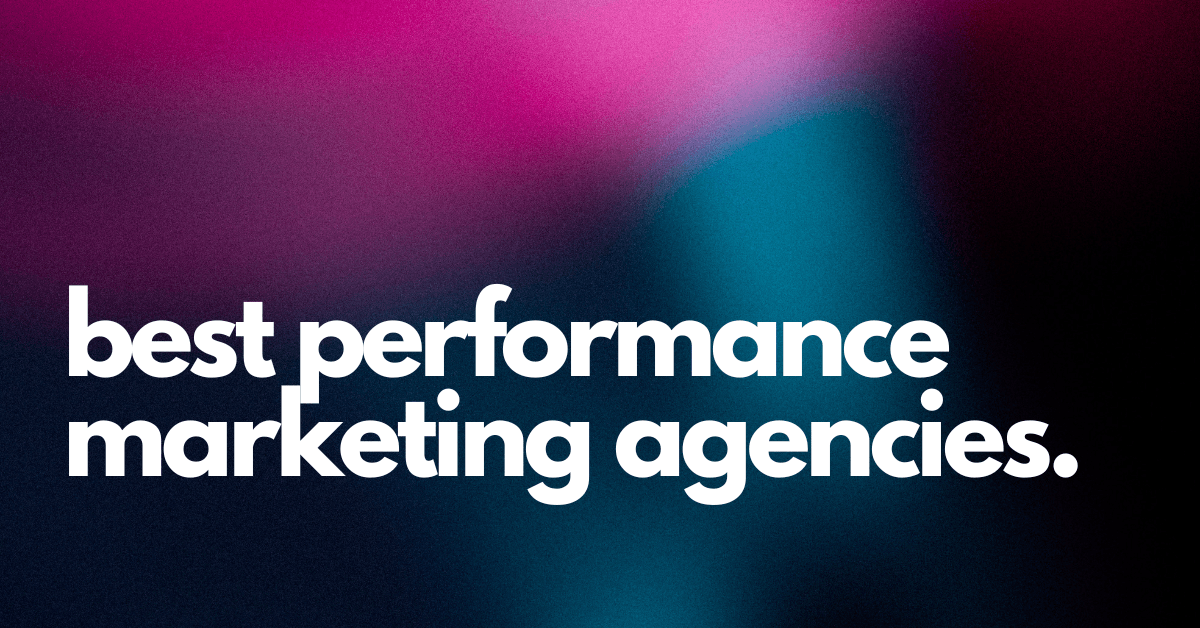If your company isn’t using video in 2025, you’re already behind.
From brand storytelling to internal training, corporate video production has become one of the most valuable tools businesses use to communicate, educate, and market. It’s no longer just a “nice-to-have” – it’s expected.
And the numbers back it up.
According to Wyzowl’s 2025 Video Marketing Report, 91% of businesses use video as a mobile marketing tool, and 89% say it gives them a strong return on investment. Even internally, companies are using video to onboard new hires, share company updates, and boost employee engagement.
Why? Because it works.
Video is more engaging, more memorable, and more effective than text or static visuals alone. In fact, viewers retain 95% of a message when it’s delivered through video, compared to just 10% from reading (Insivia, 2025).
So whether you’re looking to attract talent, pitch investors, train employees, or promote your services, corporate video helps you do it faster and better.
In this guide, we’ll break down exactly what corporate video production is, why it matters, the different types of corporate videos, and how the process works.
Let’s get into it.
What Is Corporate Video Production?
Corporate video production is the process of creating video content for business purposes.
That’s the simple definition – but there’s more to it.
It covers a wide range of videos, from external marketing assets like brand stories and product explainers, to internal content like onboarding videos, executive updates, and employee training.
What makes it corporate isn’t the tone or style – it’s the purpose. These videos are designed to help companies communicate better. Whether that’s with customers, employees, partners, or investors.
And just to clear things up – it’s not all suits and boardrooms.
In 2025, corporate videos can look like polished documentaries, casual social clips, or fast-paced product demos. They can be live-action or animated, scripted or interview-style. The common thread? They help your business tell its story clearly and professionally.
So whether you’re a startup creating your first brand video or a global company standardizing training across 10 countries, corporate video production is how you turn business goals into watchable, shareable, high-impact content.
Why Corporate Video Production Matters
Video isn’t just popular – it’s powerful.
In 2025, more companies than ever are using video to streamline communication, build stronger brands, and improve how they engage both customers and employees.
Here’s why corporate video production is worth the investment.
It Makes Your Brand Easier to Understand
People would rather watch than read. A short brand video can do more in 60 seconds than a deck or blog post can do in 10 minutes. It’s visual, emotional, and digestible.
That’s why 82% of businesses say video helps them explain their products or services more clearly (Wyzowl, 2025).
It Builds Trust
From customer testimonials to behind-the-scenes culture videos, corporate video adds a human touch that makes your company more relatable. That’s especially important in B2B, where long-term relationships matter.
It Improves Internal Communication
Remote work hasn’t gone away, and companies need better ways to keep teams aligned. Video updates from leadership, training modules, and onboarding clips are faster and more effective than written documents.
Internal videos also lead to higher information retention rates – up to 83% compared to 30% from text-based learning (TechSmith, 2025).
It’s Highly Shareable and Easy to Repurpose
A well-made corporate video isn’t a one-and-done asset. You can cut it into shorter clips, use it across your website, emails, social posts, presentations, and even recruiting campaigns.
One video = multiple touchpoints.
It Drives Results
This isn’t just about brand feel-good moments. 88% of marketers report that video has directly increased sales in their organization, while 86% say it helps generate leads (Wyzowl, 2025).
So whether you’re selling a product, hiring new talent, or aligning your team, video helps you do it more effectively.
Types of Corporate Videos
Corporate video production is a whole range of formats, each serving a different business goal. Some are meant to build brand awareness, others help teams communicate better or onboard new employees more efficiently.
Below are the most common types of corporate videos companies use in 2025, with real examples of how and why each one works.
Brand Story / Company Overview
This is your flagship video – the one that captures who you are, what you do, and why you exist.
It’s not about listing services. It’s about connecting emotionally. Think storytelling over stats.
Brand story videos are often shown on homepages, in sales meetings, or during recruitment. They highlight your mission, values, and company culture in a way that builds trust. And in a world where buyers do their research before reaching out, a great brand video can make a strong first impression, without a sales pitch.
Example use: A SaaS company uses a 90-second brand video to show its journey from a small startup to an enterprise solution provider, featuring employees and customer testimonials.
Product Demos and Explainers
If you sell something that isn’t instantly self-explanatory, this is your best friend.
Product demo videos walk viewers through features, benefits, and how to get started. Explainer videos, on the other hand, are often more visual or animated and break down complex ideas in a simple, engaging way.
These videos are perfect for sales enablement, ads, landing pages, and onboarding. They help people quickly “get it,” which is essential when you’re working with limited attention spans.
Tip: Keep it focused on outcomes. Show how your product solves a specific problem or saves time, not just what buttons it has. For best results, partner with an explainer video agency.
Training and Onboarding Videos
Let’s say you’re hiring fast. Or your team is remote and scattered across time zones. Or maybe your customer support is drowning in the same questions.
Training videos are your scalable solution.
Whether it’s an internal onboarding series for new employees or a step-by-step how-to guide for customers, these videos save hours of live explanation. And because they’re visual, they stick.
In 2025, more companies are replacing or supplementing handbooks with video walkthroughs – everything from benefits enrollment to security protocols.
Bonus: You only have to record it once, but you can use it for every new hire.
Internal Communications and Executive Messages
These videos aren’t public, but they’re incredibly important.
A short video from the CEO can do more to align teams than a 10-page memo. Whether it’s a quarterly update, company-wide announcement, or change in direction, video adds clarity, tone, and a sense of connection, especially in remote or hybrid teams.
Internal comms videos can also include department updates, product roadmap walk-throughs, or even culture-building messages around values or milestones.
Pro tip: Keep them concise and conversational. People are more likely to engage if it feels human, not like reading from a script.
Recruitment and Company Culture Videos
Attracting great people isn’t just about job descriptions anymore.
Candidates want to know what it’s really like to work at your company. Culture videos show off your team, your energy, and the kind of people who thrive there. Think team interviews, office footage, behind-the-scenes clips, and personal stories.
These videos live on your Careers page, LinkedIn, and even in outreach messages from recruiters.
They help filter in the right candidates and filter out the wrong ones.
Example: A tech company creates a “Day in the Life” video for each department, helping applicants visualize themselves on the team.
Customer Testimonials and Case Studies
Nothing builds credibility like hearing from real customers.
Testimonial videos highlight client success stories and show how your product or service solves real problems. They work because they don’t come from you – they come from someone like your audience.
The best testimonials feel authentic, not rehearsed. You want emotion, specifics, and results.
And you don’t have to overproduce these. A quick Zoom interview, well-edited, can be more believable than a heavily scripted shoot.
Use them on landing pages, sales decks, or social media to build trust fast.
Event Recaps and Trade Show Highlights
If you’re hosting or attending events, don’t let the moment end there.
Event recap videos capture the energy, excitement, and key takeaways from conferences, summits, or team offsites. They’re great for social sharing, future promotion, or simply reminding attendees why it mattered.
Even internal events – like leadership retreats or hackathons – can benefit from quick highlight reels that boost morale and reinforce culture.
These videos are fast-paced, visually dynamic, and usually set to upbeat music. Think b-roll, soundbites, crowd shots, and speaker clips.
Investor or Stakeholder Presentations
When you need to make a case to investors or board members, video helps you do it with clarity and polish.
This might be a pitch-style video, a financial year-in-review, or a product roadmap presentation with visual support. It gives stakeholders a clear, cohesive story backed by visuals, metrics, and messaging that sticks.
Key benefit: Helps you deliver a consistent message to every stakeholder, regardless of timezone or meeting attendance.

Social Media Video Content
Social media is where many of your audiences spend their time, and corporate doesn’t mean boring.
More brands are producing short, engaging, platform-specific video content for LinkedIn, Instagram, and even TikTok. These might include customer tips, company milestones, quick thought leadership clips, or casual team updates.
They’re often vertical, under 60 seconds, and shot with a phone – but they still reflect your brand. Think of it as the “lighter” side of corporate video, made to feel authentic and relatable.
The Corporate Video Production Process
Whether you’re creating a 90-second brand video or a 10-part employee onboarding series, the process behind it is largely the same.
What changes is the scale, complexity, and how many people are involved.
Here’s a breakdown of how corporate video production works – from first idea to final export.
1. Strategy & Planning
Before cameras roll or scripts get written, there needs to be a clear reason for the video.
That means answering a few key questions:
- What’s the goal of this video? (Brand awareness, employee training, stakeholder communication?)
- Who’s the audience?
- Where will the video live? (Website, LinkedIn, internal portal, trade show screen?)
- What kind of tone and format makes sense?
This step also includes setting timelines, budgets, and who needs to be involved (marketing team, HR, execs, etc.). The more alignment you get here, the fewer headaches you’ll have later.
2. Scripting & Storyboarding
Now you turn your concept into something you can film.
Scripting isn’t just for actors – it’s for clarity. A well-written script helps avoid confusion, wasted shoot time, or rambling dialogue.
You don’t have to write word-for-word (unless it’s a voiceover or promo), but even internal videos benefit from a solid structure.
Storyboarding can be simple – just rough sketches or notes describing each scene. It helps your team (and stakeholders) visualize the end result.
3. Pre-Production
This is where all the prep happens before shoot day.
Depending on the type of video, this might include:
- Booking a location (office, studio, remote site)
- Hiring talent or confirming team members to appear on camera
- Scheduling interviews or filming sessions
- Gathering equipment or working with a production team
- Finalizing the script and getting approvals
For animations or motion graphics, this phase is when illustrators or animators start developing assets based on the storyboard.
Pro tip: the more you button up here, the smoother your actual shoot or production will go.

4. Production
This is where you capture the footage – or record voiceovers, screen captures, interviews, etc.
Live-action shoots often involve a crew, lighting setup, cameras, and a director or coordinator. For corporate shoots, it’s common to film in-office, using employees or leaders as talent.
Things to watch for:
- Good lighting (natural or studio – just avoid shadows and backlighting)
- Clean audio (use a mic, not just the camera’s built-in one)
- Framing and composition (declutter backgrounds, avoid harsh angles)
If you’re working with an agency, they’ll typically handle all of this. If you’re producing internally, this is where coordination matters most.

5. Post-Production
This is the editing phase, where your raw material turns into a finished, polished video.
Editors trim the footage, adjust audio, add music, insert motion graphics or lower thirds (titles, names, etc.), and make sure everything flows cleanly.
This is also when branding elements are added – logos, colors, fonts – along with subtitles or captions (a must for accessibility and internal content).
In many corporate videos, there’s also a round of internal review here – marketing, comms, or leadership might weigh in with feedback before final delivery.
6. Review & Delivery
Once the edit is done, the video is exported in the right formats for its intended use – HD for websites, compressed MP4 for email, vertical for LinkedIn or Instagram, etc.
From here, it can be:
- Uploaded to your site or social channels
- Shared internally through your LMS or comms tools
- Included in presentations or emailed to prospects or partners
And if the video is part of a larger campaign, you may cut it down into shorter clips, repurpose parts of it for paid ads, or turn it into social-first versions.
Step-by-Step: How to Create a Corporate Video
Not every business has a full in-house creative team – or the time to figure everything out from scratch. So if you’re producing your first corporate video internally, here’s a step-by-step guide that keeps things simple and actionable.
You don’t need a film degree. You just need a clear goal, a bit of structure, and the right tools.
Step 1: Know Exactly What the Video Is For
Is this video meant to promote your product? Onboard new hires? Build company culture?
Nailing the purpose up front saves time and prevents endless rewrites. Your entire script, visuals, and format should support that one goal.
Step 2: Decide What Kind of Video You’re Making
Use your goal to pick the format. Some examples:
- Want to explain what you do? → Brand video or explainer
- Need to train new employees? → Onboarding tutorial
- Promoting your culture to candidates? → Recruitment or day-in-the-life video
Once you know the type, you’ll know what kind of footage, talent, and tone you need.
Step 3: Write a Script or Outline
If it’s a voiceover or presentation-style video, write a full script. If it’s interview-based, prep a loose outline or list of talking points.
Keep it short and conversational. And don’t try to say everything – focus on clarity over detail.
Pro tip: Read your script out loud. If it sounds robotic, rewrite it.
Step 4: Plan the Production
You don’t need a Hollywood set, but you do need to be organized.
Make a basic production plan that includes:
- Shoot date(s) and times
- Location (clean, quiet, well-lit is best)
- People on camera (brief them ahead of time)
- Equipment (phone, mic, tripod, lighting if possible)
If you’re doing animation instead of filming, this is where you’d coordinate with a designer or motion graphic specialist.
Step 5: Capture the Content
Keep your setup simple:
- Use a tripod or steady surface for stable shots
- Shoot in natural light if possible (avoid backlighting)
- Use an external mic for better sound (clip-on mics are affordable)
- Do multiple takes – it gives you more to work with
For internal videos, don’t over-polish. A clean, confident delivery matters more than flashy visuals.
Step 6: Edit the Video
Use beginner-friendly tools like CapCut, iMovie, or Adobe Premiere Rush. These make it easy to:
- Trim the clips
- Add transitions and background music
- Include captions (essential for accessibility)
- Add a logo or simple branding
Aim for under 2 minutes unless it’s a training video – attention spans are short, even inside companies.
Step 7: Review, Revise, and Share
Get quick feedback from someone else on your team. Is anything unclear? Too long? Off-tone?
Once you’re happy with it, export in the right format and share it wherever it needs to go – your site, internal portal, social media, or email.
If it’s a video you’ll be using often (like onboarding), organize a system to keep it updated as things change.
That’s it. No fancy gear. No production crew. Just a clear message and some structure.
Of course, once you start scaling your content, or need to level up the quality, it might be time to consider partnering with a production agency.
That’s exactly what we’ll cover next: In-House vs. Agency Production – and which one makes more sense for your business.
In-House vs. Hiring a Video Production Agency
At some point, every company asks the same question:
Should we make our videos ourselves, or bring in a production agency?
The short answer? It depends on what you need. But if you care about speed, quality, and results, an agency is usually the better choice.
Here’s how the two options really stack up.
In-House Production: Feasible, But Limited
Going in-house can work, especially if you have a creative team with video skills and only need occasional, low-complexity content.
Where in-house works well:
- Quick updates or internal communications
- Teams with an experienced content creator on staff
- Projects that don’t require high production value
But here’s where it starts to fall apart:
- You’re relying on non-experts to handle scripting, filming, editing, and project management
- It takes a lot of time, often more than people expect
- Creative quality and consistency can vary
- You’ll eventually hit a ceiling in terms of speed and scalability
So while it feels cheaper, in-house video often costs more in time, energy, and missed opportunity.
Working with a Video Production Agency: Faster, Smarter, Better
A video production agency brings more than just a camera crew – they bring strategy, structure, and results.
Here’s what you get with a good agency:
- Creative that’s built to perform. They’ve produced hundreds of videos and know what works across different industries and platforms.
- Speed without the stress. No more juggling scripts, edits, voiceovers, and deadlines. The agency handles it all.
- Professional polish. From lighting and audio to motion graphics and animation, the quality is instantly noticeable.
- Scalability. Need five videos next month instead of one? They can make it happen, without overwhelming your team.
- Platform-specific knowledge. Whether it’s a vertical video for LinkedIn, a YouTube explainer, or an internal training series, they know how to format and optimize it properly.
And most importantly? You stay focused on your business while they handle the heavy lifting.

Why Udonis?
We help companies produce video ads that are visually impressive, strategic, scalable, and results-driven.
Whether you need a full brand video, a polished testimonial series, or quick-turn UGC edits that still feel professional, we’ve got the team, tools, and experience to get it done – on time and on point.
If you’re looking for a long-term partner to help you do video right, we’re ready when you are.
How Much Does Corporate Video Production Cost?
The cost of corporate video production can vary a lot, kind of like asking how much a website costs. It depends on what you’re making, how complex it is, and who’s producing it.
But here’s a realistic breakdown to help set expectations.
In-House Production: $0 – $3,000+
If you already have someone on your team who knows how to film and edit, in-house can be affordable. You’re mostly paying in time, not money.
That said, once you start adding equipment, editing software, stock footage, or extra team hours, the cost rises quickly.
Also: the hidden cost is speed. Internal teams are usually juggling other tasks, which means projects drag out or lose momentum.
Freelancer or Solo Videographer: $1,000 – $5,000 per video
Freelancers can be a good option for one-off videos or local shoots. You’re paying for their time, talent, and gear, but still managing the project yourself.
This usually doesn’t include strategy, scripting, or revisions unless negotiated upfront. And quality can vary depending on who you hire.
Agency-Produced Video: $3,000 – $15,000+
Working with a video production agency is more of an all-in-one solution, and it doesn’t have to break the bank.
Most agencies offer flexible packages depending on:
- Video length and format
- Type of video (animated, testimonial, product demo, etc.)
- Level of post-production (motion graphics, voiceovers, captions, etc.)
- Volume of deliverables (edits for different platforms, cutdowns, etc.)
For example, a high-quality 60-second brand video with a crew, editing, and revisions might cost around $7,000–$10,000. A UGC-style testimonial edit with subtitles and light branding? Much less.
What you’re really paying for is speed, creative clarity, and a polished result, without having to manage 10 moving parts on your own.
Final Thoughts on Corporate Video Production
Corporate video production isn’t just a trend – it’s a smarter, faster way to communicate in 2025.
From brand stories to internal training, videos help your business connect with people in a way that’s clear, memorable, and scalable. Whether you’re explaining what you do, aligning your team, or building trust with customers, video makes it easier.
You can do it in-house. You can start small. But when you’re ready to go further – or just want a smoother, faster process – it’s worth bringing in a partner who does this every day.







Comments